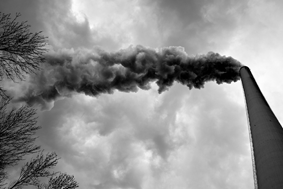Poor Pak nation dupe of global warming, air pollution
SOOT FROM diesel exhausts and the burning of wood, agricultural waste and dung for heating and cooking causes an estimated two million premature deaths a year, particularly in the poorest countries. Scientists say that concerted action on these substances can reduce global temperatures by 0.5 degrees Celsius by 2050 and prevent millions of cases of lung and heart disease by 2030. There is no way to effectively address a climate change without reducing carbon dioxide, the most dangerous, prevalent, and persistent greenhouse gas. It stays in the atmosphere for hundreds of years.
The year 2012 is expected to be around 0.48 °C warmer than the long-term (1961-1990) global average of 14.0 °C, with a predicted range of between 0.34 °C and 0.62 °C, according to the Met Office annual global temperature forecast. The middle of this range would place 2012 within the top 10 warmest years in a series which goes back to 1850. Greenhouse gases can stay in the atmosphere for an amount of years ranging from decades to hundreds and thousands of years. No matter what we do, global warming is going to have some effect on earth.
In February 2007, the UN released a scientific report that concludes that global warming is happening and will continue to happen for centuries. The report also stated with 90 per cent certainty that the activity of humans has been the primary cause of increasing temperatures over the past few decades. This proved with passage of time, average temperatures have climbed 1.4 degrees Fahrenheit (0.8 degree Celsius) around the world since 1880.
The 20th century’s last two decades were the hottest in 400 years. And the UN Intergovernmental Panel on Climate Change (IPCC) reports that 11 of the past 12 years are among the dozen warmest since 1850. Global emissions of carbon dioxide in atmosphere from fossil fuel burning currently are approaching 7 billion tons of carbon per annum. Carbon level is plying a notorious role in causing the global warming.
According to the WFP, nearly half of Pakistan’s (180 million) people are at risk of going short of food due to a recent surge in world food prices.
Air pollution has also become a major problem in most cities. There are no controls on vehicular emissions, which account for 90 per cent of pollutants. The National Conservation Strategy Report claims that the average Pakistani vehicle emits 25 times as much carbon monoxide, 20 times as many hydrocarbons, and more than three-and-a-half times as much nitrous oxide in grams per kilometer as the average vehicle in US.
About three-quarters of the anthropogenic emissions of carbon dioxide to the atmosphere during the past 20 years have been due to fossil-fuel burning. Activities consuming fossil fuels include power generation, industrial/manufacturing processes and transport. The rest of carbon dioxide emissions are predominantly due to land-use change, especially deforestation.
According to latest reports millions of people in Pakistan are exposed to dangerous levels of outdoor and indoor air pollution and vector-borne diseases and millions of people suffer from diseases because of having no access to clean air.
In Pakistan indoor air pollution alone is the reason for 30,000 child deaths per year. In all major cities, airborne particulate matter exceeds safe levels and causes some 22,700 deaths annually. The BBC states the country suffers from some of the highest air pollution levels in the world. The emissions in the country from industries, refineries, thermal power plants and vehicles all chip in to heart disease, lung disorders and cancer.
Pakistan’s health indicators, health funding, and health and sanitation infrastructure are generally poor, particularly in rural areas. About 19 per cent of the population is malnourished a higher rate than the 17 percent average for developing countries and 30 percent of children under age five are malnourished. Leading causes of sickness and death include gastroenteritis, respiratory infections, congenital abnormalities, tuberculosis, malaria, and typhoid fever.
According to a WB report, Pakistan has responded to its environmental problems by developing laws, establishing Government agencies and accepting technical assistance from donors.
When solid waste is burnt, heavy metals like lead, toxic gases and smoke spread over residential areas. The wind also carries waste, dust and gases caused by decomposition.
In many cities there are no air quality regulations and, where they do exist, national standards and their enforcement vary markedly. Across the country, city air is often thick with exhaust fumes, factory smoke or soot from coal burning power plants.
Pakistani nation is not a major pollution contributor compared to other Asian countries. The majority of its people don’t destroy forests, don’t wipe out endangered species, don’t pollute rivers and oceans, and emit essentially no greenhouse gases. We believe that a smaller population would help us to preserve the environment and live within the limit of renewable resources, as part of a comprehensive approach to the environment and sustainability.
All possible measures need to be adopted. Special attention must be given to health and hygienic conditions. If we monitor and manage the environment properly, we can significantly reduce the number of people suffering from respiratory and heart disease, and lung cancer. At the end, green living style matters a lot its more near to nature and important most if number of plantation increases it automatically clean air in their surroundings as trees called lungs of environment and mechanically clean all types of pollutants.


Comments
Post a Comment